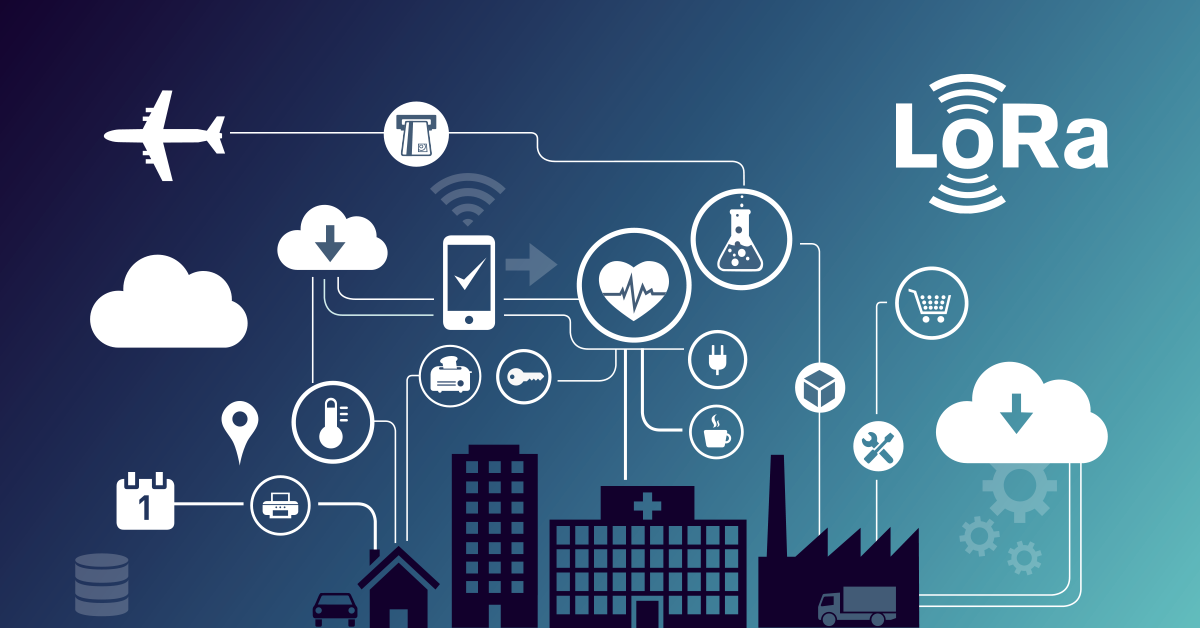IoT is the buzzword of recent years and we would like to introduce the terms and technologies behind it on our blog. This is part 2 of our blog series on LoRa - a technology that will undoubtedly be part of the future of the Internet of Things.
Which applications are possible with LoRa(WAN)?
At the moment, there is no common transmission technology on the Internet of Things. Of course, the proven methods WLAN, Bluetooth, and LTE are obvious; however, they are unsuitable for many application scenarios for various reasons.
They consume a lot of electricity, require too much bandwidth, offer only a small range, or are expensive to use due to frequent charges. Often several of these restrictions apply at the same time.
The use scenarios on the Internet of Things are extensive: the smart home can already be found in many households, at least in the form of app-controlled lights, power sockets, and so on. "Smart" will revolutionize the way we live, work and travel in the future. Other topics such as connected cars and wearables, on the other hand, are still in their infancy.
In agriculture, logistics, energy supply, or intelligent industry (IIoT), devices are made smart everywhere, i.e., connected to the Internet.
So far there are only a handful of larger LoRaWAN networks, for example from Swisscom or SK Telecom in South Korea. In Germany, grade Unitymedia launched a network in September with Conrad Connect. The Dutch initiative, The Things Network (TTN), which has been active since 2015, is pursuing a very exciting community-based approach across national borders.
The Things Network now consists of over 5,000 Internet-connected gateways worldwide - and the number is rising rapidly. The use of the LoRaWAN network in every area of the IoT is an option and is therefore in direct competition with other providers such as Sigfox.
What are the differences between LoRa, Sigfox, and other providers?
There are, of course, the different technology concepts, which you can read about in our articles on Sigfox. In addition, both terms also differ in the entrepreneurial context (see below).
Although there are many LPWAN technologies, when comparing the most important current providers of IoT communication technology (and probably also in the future), we should concentrate on Sigfox, LoRa, and MIOTY because these technologies are both actively developed or implemented. Other proprietary protocols and stacks such as the Dash7 Alliance protocol have not gained nearly as much traction.
SigFox was founded in 2009 and is a French company based in Labège, France. SigFox probably has the strongest LPWAN pull due to its successful marketing campaigns in Europe and a very reliable technology. It also has a large ecosystem of suppliers such as Texas Instruments, Axom, and Silicon Labs.
In contrast, LoRaWAN is the open standard network layer of the LoRa Alliance; an open, non-profit organization. SigFox uses proprietary technology, an example of using a slow modulation rate to achieve greater range. This design choice makes SigFox an excellent option for applications where the system only needs to send small, infrequent data bursts.
In future posts, we will focus on MIOTY, a very interesting IoT solution from the Fraunhofer Institute.
Will LoRa remain a niche?
Here, as always, the experts argue. Some are sure that WLAN, Bluetooth, and LTE will soon be history in the market of widely scattered things and that they will be replaced by LoRaWAN. Smart terminals are to become more efficient using LoRaWAN technology.
There are also other players in the market, such as SigFox, and various analysts, including Gartner, are taking Sigfox to task. They doubt its future viability from a technological or entrepreneurial point of view.
However, a neutral, sober view focuses on the market and its needs. In the future, we will need massive communication solutions for IoT devices that transmit data over long distances with low energy consumption, therefore it is unlikely that LoRa (or Sigfox) will remain merely a business niche in the future.
 Published by
Published by 




.jpg)






